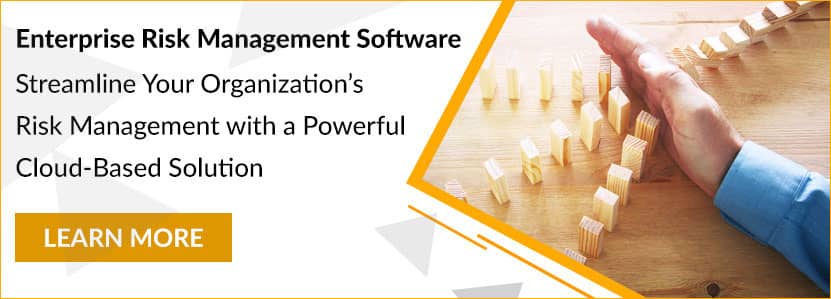Home/ Blog / Understanding the Compliance Risk Priorities of Businesses in 2021
The biggest institutions and organizations in the country have always been pioneers in managing risk and compliance. While their needs may sometimes differ from smaller businesses, their insights and analysis can guide the industry. There have been shakeups and changes in many major American corporations over the past few months focused on compliance management. Businesses know that improving compliance and risk management requires a holistic solution.

Listening to the Experts
New compliance managers at some of the biggest businesses and institutions in America are focusing on structural improvements. Instead of simply looking for higher efficiency under existing processes, the focus is on providing people within the organization, the tools and the environment required to be compliance aware.
Jerry Mauricio joined Freddie Mac as the new compliance chief and was recently interviewed by the Wall Street Journal. He was asked about his main priorities as the new Chief Compliance Officer by WSJ. His response was:
Just to start off with managing compliance risk, making sure that we manage it within Freddie’s enterprise risk management framework…[I want to make] sure that not just compliance in managing the risks, but everyone in our organization takes the responsibility of compliance and executes on it.
Jerry highlighted an essential compliance directive for businesses across the country; an organization where each member understands their risk ownership and compliance responsibilities. Another essential concept is improvements to the framework. Instead of simply looking at a few processes or hiring more compliance personnel, they look at each part of their compliance framework. The focus is to make permanent improvements to the way things are managed.
Risk monitoring is also an essential part of risk ownership. Monitoring risks in real-time provides the ability to see the impact of each action on the organization's overall risk assessment. Share on XIn July, Alonzo Weems became the new Chief Ethics and Compliance Officer at Eli Lilly and was also interviewed by the Wall Street Journal. He was also asked about his main priorities. He gave a detailed and illuminating response:
We need to be doing [compliance] in ways that are easier for our colleagues to understand. We need to be thinking about how it can be easier to get the information—as we enable, partner, and assist our colleagues in doing their work. That’s not sexy. But it’s really, really important in delivering a program that meets the needs of the business.
We have to be making sure that we have the right capabilities, that our monitoring and assessing of risks are right. And that we’re doing that in the best ways. That we’re running our enterprise risk-management program in the best ways.
Mr. Alonzo also focuses on the big picture when it comes to compliance. He isn’t talking about making people work harder or hiring more people. His focus is on ensuring that the organization provides all the employees with all the information and knowledge they need to be compliant as quickly as possible. The second thing he focuses on is the organization’s ability to monitor its risks. His focus is on improving the monitoring framework that is present within Eli Lilly.
Enabling Risk Ownership
Most organizations also want their employees to take responsibility when it comes to compliance, as Mr. Jerry wants, and the core component of accomplishing this goal is present within Mr. Alonzo’s answer. Providing people with easy access to risk and compliance information is the easiest way to increase risk and compliance awareness throughout the organization. Instead of expecting or requesting the employees to look for information that may not be easy to understand, organizations should provide risk and compliance information with the proper context at the right time.
Providing information is something that modern risk and compliance platforms do well. When the compliance officer emailed someone about a compliance issue, the person at the other end may not understand the importance of the problem. They can only see the part of the compliance framework they are directly interacting with during their tasks. Modern complaints platforms attach all communication to the relevant risk and compliance requirements. When a task is assigned to an employee, that employee can see the risk and compliance requirements that will be affected by the task. This visibility increases the knowledge of risk and compliance ramifications across the organization.
Risk monitoring is also an essential part of risk ownership. Monitoring risks in real-time provides the ability to see the impact of each action on the organization’s overall risk assessment. All decision-makers within the organization are provided the ability to see the organization’s risk exposure in real-time. This business intelligence ensures that the decisions they take will account for the current and expected risks for the organization.
interested in seeing how your organization can make risk and compliance information easily accessible to the whole organization while also improving its monitoring capabilities? Get in touch
with our experts for a demonstration of Predict360, the American Bankers Association endorsed risk and compliance management platform.
Request a Demo
Complete the form below and our business team will be in touch to schedule a product demo.
By clicking ‘SUBMIT’ you agree to our Privacy Policy.




